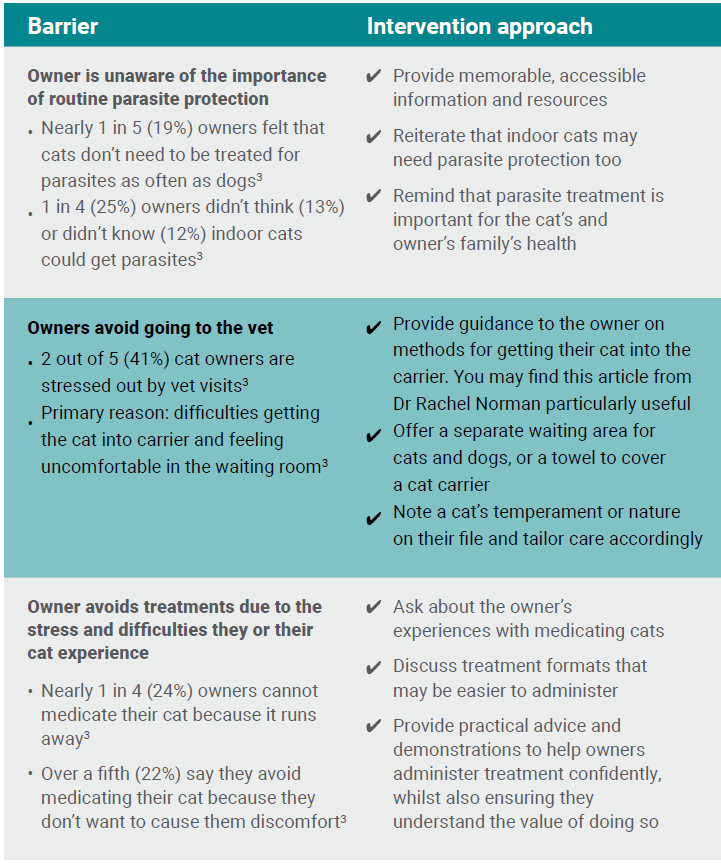PARASITOLOGY PSYCHOLOGY

Using behaviour change theory to help improve regular parasite treatment compliance in cat owners
Globally, there is inadequate and insufficient protection against both ectoparasites and endoparasites in cats(1) due to a lack of cat owner compliance. You may find this frustrating as a vet, especially as it can impact client satisfaction and animal well-being.
How does behaviour change theory fit into feline parasite prevention?
Behaviour change interventions can be defined as “coordinated sets of activities designed to change specified behaviour patterns.”(2) They may be one of the most effective avenues to improve animal well-being alongside clinical excellence by helping owners to adopt new behaviours.
Getting to the bottom of why owners aren’t compliant is critical to their pet’s well-being. A parasite risk assessment tool can support a proactive approach and help owners understand protocol recommendations from you and your team.
Matching identified barriers with interventions
The behaviour change model we focused on is COM-B.2
In this model, the likelihood of a behaviour (B) being performed is determined by the capability (C), opportunity (O) and motivation (M) of the individual performing the behaviour.
We looked at the psychological abilities (C), physical environment (O) and levels of confidence and risk-aversion (M) of cat owners that prevent them from complying with parasite control plans (B).
To support you in encouraging owner compliance with parasite control plans, we identified key barriers you may face in practice and potential behavioural approaches to address them.

TIP: Ensure you and your team align on your parasite treatment protocols and related advice. A clear, consistent message across clinic team members will help your clients remember and trust the guidance provided.
There’s a unique space for each parasiticide product, and by ensuring the right deworming for the right cat, you’ll enhance parasite control significantly.
You and your team are ideally placed to champion and promote parasite control protocols to cat owners. By actively listening to your clients’ concerns and tailoring your conversations and treatment plans accordingly, you can help bring them on board for long-term, ongoing compliance.
References:
1. McNamara, J., Drake, J., Wiseman, S. et al. Survey of European pet owners quantifying endoparasitic infection risk and implications for deworming recommendations. Parasites Vectors. 2018 Nov; 11:571.
2. Michie S., van Stralen M.M., West R. The behaviour change wheel: A new method for characterising and designing behaviour change interventions. Implementation Sci. 2011 April; 6:42.
3. Vetoquinol 2023. Data on file. Research report: Cat owners’ segmentation with a focus on parasiticides.

